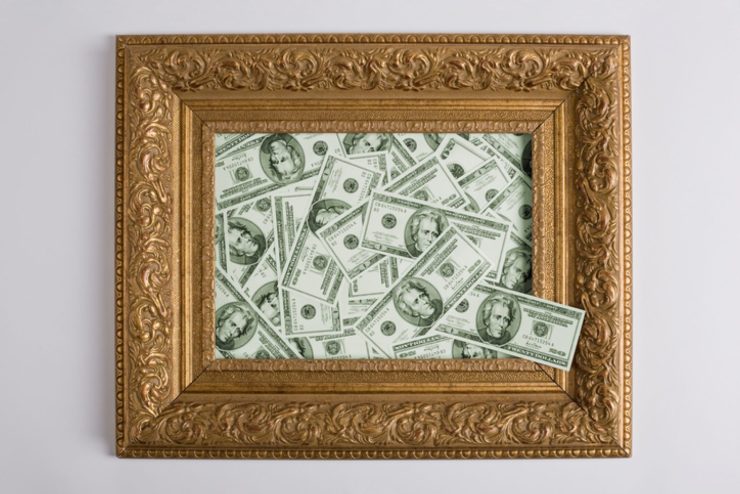From Collector to Investor: Practical Considerations for Art Buyers
February 27, 2019
You may have wondered, is art an investment? The short answer is yes, but there is no balance sheet, cash flow or earnings to help determine its value. Perhaps that’s one reason many collectors treat the investment value of art as an afterthought.
Creating an art collection and tending to its value as an investment do not need to be mutually exclusive goals. Here are our tips for approaching art as an investment:
In 1898, the Cone sisters, two Baltimore ladies who were the heirs to their immigrant father’s textile business, purchased five contemporary American paintings to decorate their apartments. By the time the younger sister passed away in 1949, they had amassed more than 3,000 objects, including the world’s largest privately held collection of works by their friend Henri Matisse. Today, the Cone Collection is the crown jewel of the Baltimore Museum of Art.
Of course, most art collectors never achieve the grand scale of the Cone Collection, nor do they try. Art is an intensely personal interest for most collectors, reflecting their values and passions. They buy art to express their personalities, adorn their homes, tell stories, support artists and be part of a community.
But is art an investment? The short answer is yes, but there is no balance sheet, cash flow or earnings to help determine its value. Perhaps that’s one reason many collectors treat the investment value of art as an afterthought. A recent study from Swiss Bank UBS found that a quarter of wealthy investors have collections, with about 10 percent collecting art. Among collectors, 51 percent had never obtained an appraisal, 44 percent had no insurance on their collection and 39 percent could not estimate the value of their collection.
Creating an art collection and tending to its value as an investment do not need to be mutually exclusive goals. Here are our tips for approaching art as an investment:
1. Clarify goals.
Some people collect primarily for personal enjoyment; others invest in art to diversify their financial holdings. Art is an alternative investment that isn’t subject to the same pressures as equities and bonds. However, it’s important for collectors to understand that art, unlike most financial investments, is not a liquid asset and can lose value rapidly. It pays no interest or dividends, and its value is subject to the whims of changing tastes. Although art can also appreciate dramatically, buying it with an eye on resale value is a risky proposition. Art investors should take a tip from the Cone sisters and concentrate on buying pieces they love.
2. Focus interests.
One time-honored way to build value in art is by acquiring works by new artists early in their careers. Many collectors start out by visiting galleries and shows to get acquainted with the local art market. By cultivating their interests and learning their preferences, they often hone in on one or two they particularly enjoy, such as photography, drawings or sculpture. In this sense, art collecting is like venture capital investing – getting in on the ground floor can be highly lucrative, but not all investments pan out.
3. Learn how the art market works.
There are two distinct segments of the art market: Retail and resale. The retail market consists of dealers, galleries and other professionals in the business of art. The resale market consists of online and physical auction houses, estate sales, websites and other secondary sellers of art.
4. Get an independent appraisal.
The gallery that sold you a work is not the place to turn for an objective assessment of its value. An independent appraiser will assess the value based on a wide range of data, including what the art has already sold for or typically sells for. The fair market value calculation should reflect actual price information from auctions, secondary market websites, and other venues.
5. Insure the collection.
A homeowner’s insurance policy may not provide appropriate or sufficient protection for an art collection. It is important to check the exclusions and, if necessary, buy a separate policy to cover fine art. Working with an art insurance specialist is often prudent. For any insurance coverage of artwork, it is important to put together documentation including proof of ownership, bill of sale, provenance, a replacement estimate, photographs and the most recent appraisal.
6. Be tax-wise.
Collecting art is a long-term proposition, and recordkeeping is critical. Whether art is sold, donated or left to heirs, collectors need to be able to produce both the basis and the fair market values. Collectors are well advised to confer with their tax professionals to ensure that they understand all tax considerations, including tax efficiency strategies such as like-kind exchanges.
Collecting art can be a uniquely satisfying pastime and, with careful tending, the collection can become a cornerstone of a robust investment portfolio.
Let the Certified Financial Planner® professionals at Williams Asset Management help with your wealth management needs. Whether you need comprehensive and holistic financial planning or investment management, we can help! We are fee-based, independent financial advisors located in Columbia, the heart of Howard County, Maryland. Schedule your complimentary consultation today by calling (410) 740-0220!


